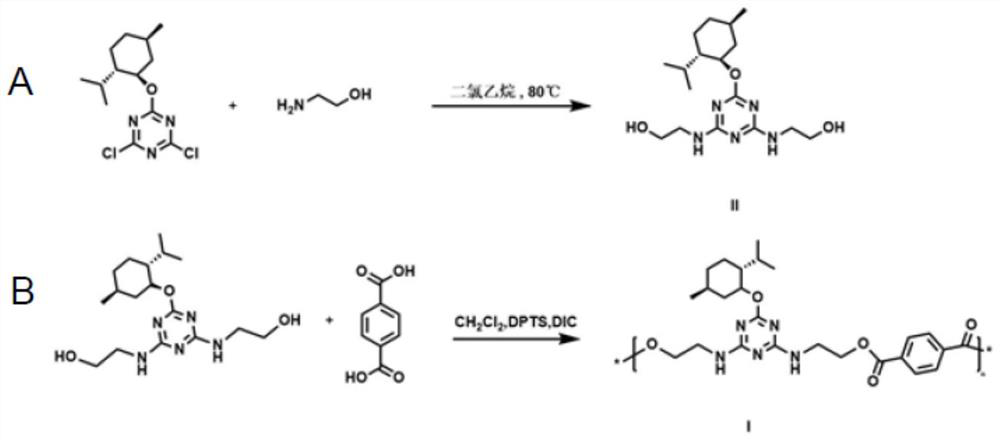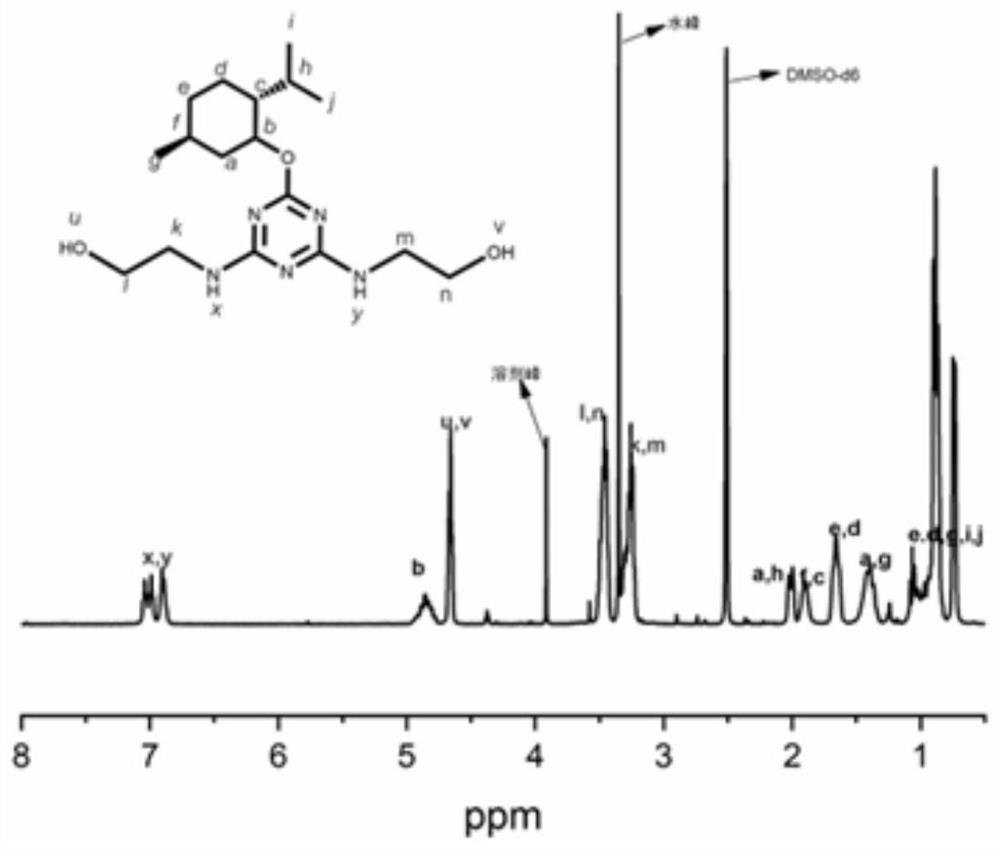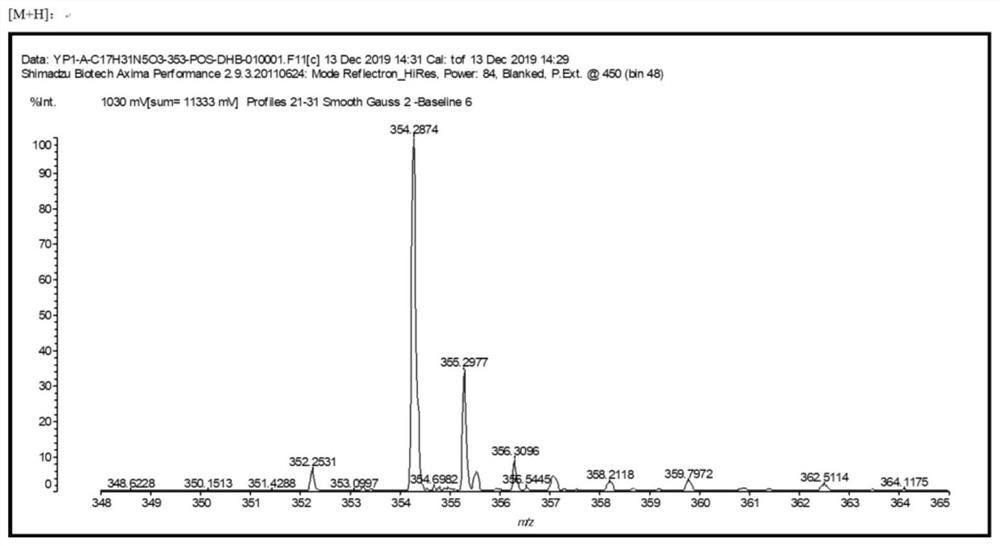Antibacterial polyester material as well as preparation method and application thereof
A polyester material and reaction technology, which is applied in the field of functional polymer material synthesis, can solve the problems of weakened antibacterial performance, destruction of harmful flora, damage to skin's own flora, etc., and achieves the effect of low cost, long-lasting effect and simple process
- Summary
- Abstract
- Description
- Claims
- Application Information
AI Technical Summary
Problems solved by technology
Method used
Image
Examples
preparation example Construction
[0062] The second aspect of the present invention provides a kind of preparation method of antibacterial polyester material as described in the first aspect of the present invention, it comprises the step of preparing antibacterial polyester material: dibasic acid compound, cyanuric chloride are mixed under nitrogen atmosphere The derived polymerizable diol monomer compound (referred to as diol monomer compound for short) is uniformly mixed with the catalyst in the second solvent, and the solution polycondensation reaction is carried out in the presence of a dehydrating agent to obtain a crude antibacterial polyester material.
[0063] In the present invention, the molecular structure of the polymerizable diol monomer compound derived from cyanuric chloride is shown in formula (II):
[0064]
[0065] Formula (II).
[0066] The reaction formula of the polymerizable diol monomer compound that prepares above-mentioned cyanuric chloride derivation among the present invention is...
Embodiment 1
[0104] Embodiment 1: The preparation method of the antibacterial and anti-adhesion polymer material of the present embodiment is carried out as follows:
[0105] According to the molar ratio of 4:1, ethanolamine and menthol monosubstituted cyanuric chloride derivatives are respectively dissolved in dichloroethane, and the ethanolamine dissolved in dichloroethane is added to menthol monosubstituted cyanuric chloride derivatives In the dichloroethane solution, the temperature was raised to 80° C., and the reaction was refluxed for 3 hours to obtain a mixed solution. The reaction mixture solution was extracted with water. The dichloroethane layer was taken, rotary evaporated and dried to obtain a white solid which was a pure diol monomer compound with a yield of 70%.
[0106] The structure of the glycol monomer compound obtained in the present embodiment is characterized by proton nuclear magnetic resonance spectrum (BmkerAV III 400), and the results are as follows figure 2 As...
Embodiment 2
[0127] According to the molar ratio of 3:1, ethanolamine and menthol monosubstituted cyanuric chloride derivatives are respectively dissolved in ethyl acetate, and the ethanolamine dissolved in ethyl acetate is added to the acetic acid of menthol monosubstituted cyanuric chloride derivatives In the ethyl ester solution, the temperature was raised to 80° C., and the mixture was reacted under reflux for 12 hours to obtain a mixed solution. The reaction mixture solution was extracted with water. The ethyl acetate layer was taken, rotary evaporated, and dried to obtain a white solid which was the pure diol monomer compound. 70% yield
[0128]Diol monomer compound and diacid compound (furandicarboxylic acid) are added in the glass flask according to the molar ratio of 1:1.5, the molar ratio of catalyst and diacid compound is 1:4, and the catalyst is 4-dimethylaminopyridine Tosylate, add dichloromethane in an amount of 0.5mL per mmol of diacid compound under nitrogen atmosphere, a...
PUM
| Property | Measurement | Unit |
|---|---|---|
| purity | aaaaa | aaaaa |
Abstract
Description
Claims
Application Information
 Login to View More
Login to View More - R&D
- Intellectual Property
- Life Sciences
- Materials
- Tech Scout
- Unparalleled Data Quality
- Higher Quality Content
- 60% Fewer Hallucinations
Browse by: Latest US Patents, China's latest patents, Technical Efficacy Thesaurus, Application Domain, Technology Topic, Popular Technical Reports.
© 2025 PatSnap. All rights reserved.Legal|Privacy policy|Modern Slavery Act Transparency Statement|Sitemap|About US| Contact US: help@patsnap.com



